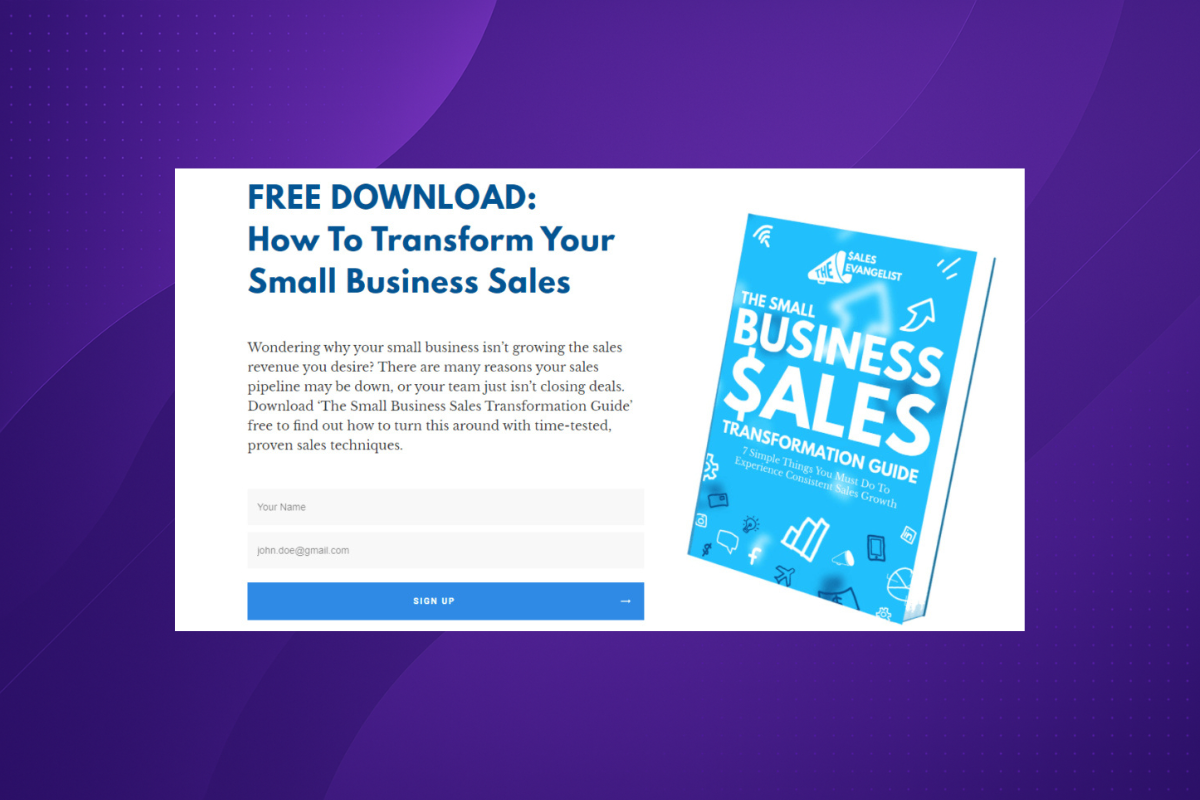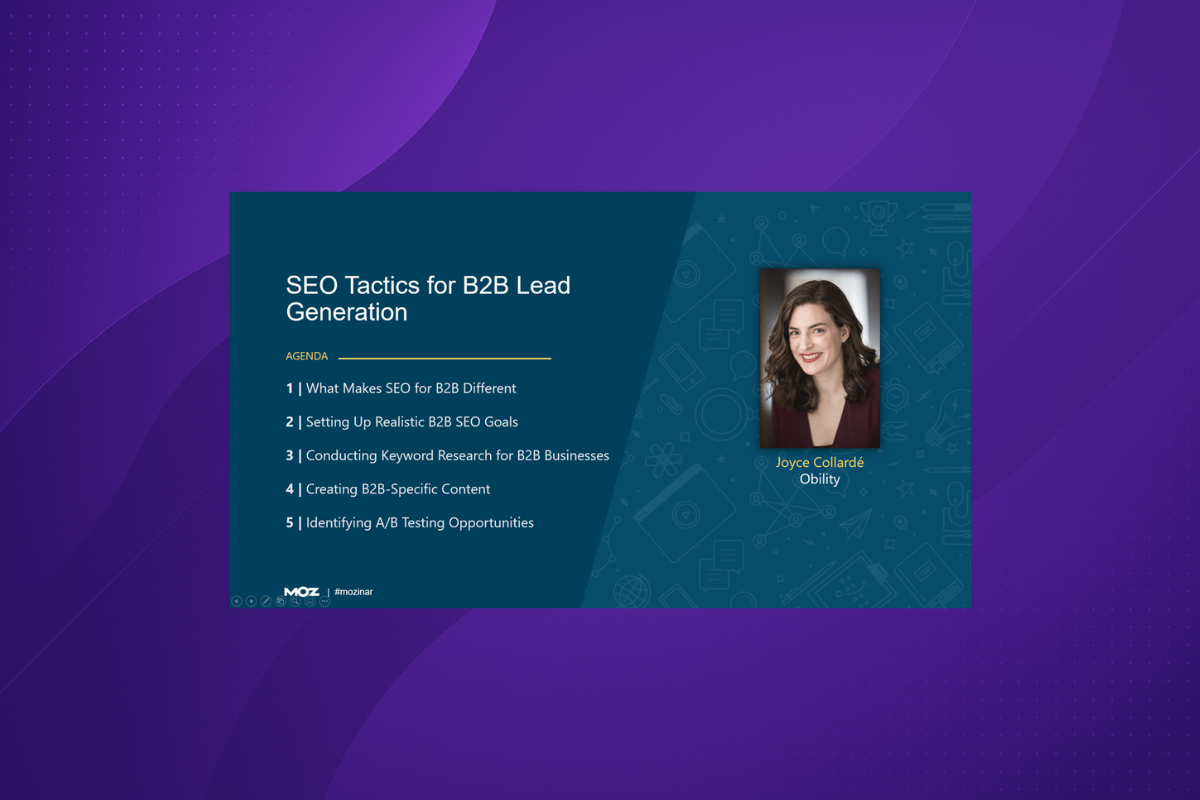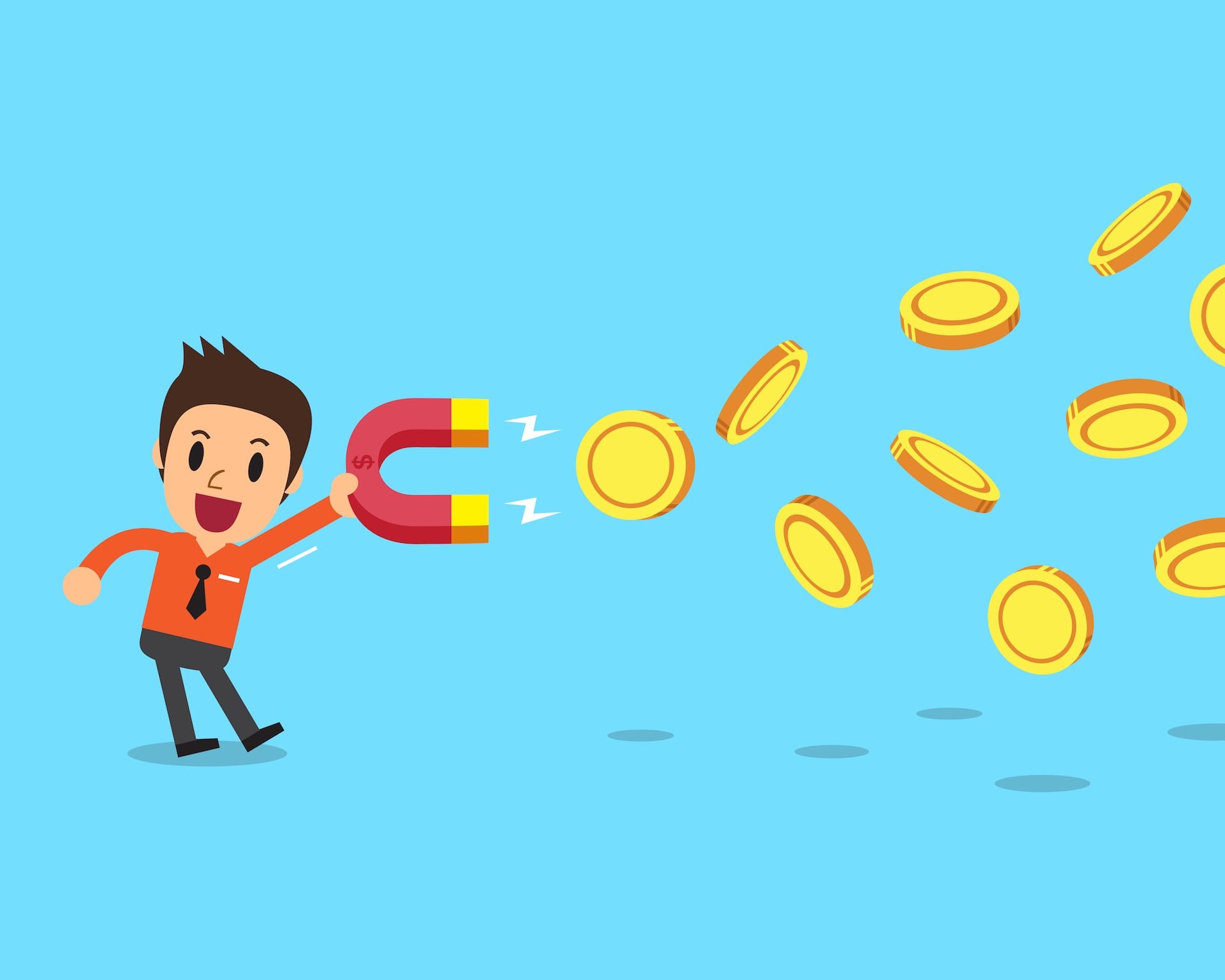How to Build a High-Converting Lead Magnet (Step-by-Step Guide)

Want more leads without sounding salesy? A lead magnet can help.
It’s one of the easiest ways to turn website visitors into email subscribers—and eventually, paying customers. But not all lead magnets work. The good ones solve a real problem, offer quick value, and make it easy to say “yes.”
In this guide, we’ll break down exactly how to build a high-converting lead magnet step-by-step. No jargon. No guesswork. Just what works.
What Is a Lead Magnet in Marketing?

A lead magnet is something you give away for free in exchange for a visitor's email address. It could be a checklist, a free trial, or an ebook—anything helpful enough to make someone say, "Yeah, I’ll give you my email for that."
In short, it’s your bait. But good bait. Because when done right, lead magnets bring in quality leads who actually want what you’re offering.
Top Types of Lead Magnets That Convert
So, you’ve got traffic—but now what? If you want those clicks to turn into email subscribers (and eventually, customers), you need lead magnets that don’t just exist—they convert.
Let’s break down the top types that consistently pull their weight, with examples that are anything but boring.
1. Best eBook Lead Magnets
Old but gold, baby. eBooks still pack a punch—if they’re not bloated, boring, or better suited for a nap than a lead form.
The secret sauce? Keep it short, sweet, and ultra-useful. Think “10 Power Tips for Crushing Your First Webinar” rather than “The History of Online Marketing.”
Design matters too—nobody wants to download something that looks like it was made in Word 2003. Oh, and don’t forget a call to action at the end: “Like this? Join our newsletter and get more magic in your inbox.”
2. Webinar Lead Magnet Ideas
Live, on-demand, replayed 87 times—it doesn’t matter. What matters is that your webinar delivers value. Think of it as free consulting. Share smart tips, answer real questions, and casually mention how your product just happens to solve the problems they’re facing.
No hard selling, just helping—with a little strategic “Oh, by the way, here’s how we do this faster with our tool.” Education plus light selling = conversion win.
3. Free Trial as a Lead Magnet
Ah, the good ol’ try-before-you-buy. This one’s a classic for SaaS and online tools. But here’s the trick: remove friction. No credit card required. No 14-step signup. Just “click here, start using.”
Want to boost conversions even more? Send onboarding emails or short walkthroughs showing how to get quick wins with your product. The goal? Get them addicted to your tool before the trial runs out.
4. Lead Magnet Templates and Checklists
Let’s be honest—people love a good shortcut. Templates and checklists are like the IKEA instructions for solving a problem (without the missing screws).
Make it plug-and-play. No fluff. Just something they can download, print, and slap on the wall next to their goals. Whether it’s “Email Welcome Sequence Template” or “Daily Productivity Checklist,” it should help your audience act now—not “after they get around to reading it.”
5. Using Whitepapers as B2B Lead Magnets
For B2B folks, whitepapers are the high-value currency of content. But don’t just stuff it with buzzwords—back it up. Use real research, statistics, expert interviews, and case studies to show you know your stuff.
The best ones don’t just inform—they position you as the obvious solution. Bonus points if you include a client success story and a subtle CTA like “Want similar results? Book a free consult.”
Step-by-Step Guide to Building a High-Converting Lead Magnet

Because "just make a PDF and hope" is not a strategy.
Creating a lead magnet that actually converts isn’t rocket science—but it does take more than slapping a “Download Now” button on your site.
From figuring out what your audience actually wants to delivering it with zero friction, here’s your no-fluff blueprint to building a lead magnet that gets clicks and emails.
Step 1: Understand Your Target Audience
Don’t guess—ask. Seriously. The best lead magnets solve a real problem your audience is already thinking about.
Use surveys, social polls, comments, or tools like AnswerThePublic or Reddit threads to spy on what keeps your people up at night.
What questions are they Googling? What tasks are they procrastinating? Once you know what makes them tick (or rage), you can craft a magnet they can’t resist.
Step 2: Choose the Right Lead Magnet Format
Not all formats fit all audiences. Your job? Match the message to the medium.
- B2B execs: Whitepapers or data-backed reports
- Busy parents: Quick checklists or short how-tos
- Marketers/designers: Templates, swipe files, or toolkits
- eCommerce shoppers: Discount codes or product quizzes
Think about what’s useful and easy to consume for your specific audience. If they need something fast and printable, don’t hit them with a 40-minute video series.
Step 3: Write a Clear Call to Action (CTA)

Your CTA needs to be obvious, benefit-focused, and borderline irresistible. “Submit” is a no. “Get My Free Guide” or “Download Your Checklist” is a yes.
People need to know what they’re getting and why it matters. Highlight the benefit right in the CTA: “Get the 5-Step Sales Email Template That Converts.”
Step 4: Promote the Heck Out of It
Your lead magnet won’t convert if nobody sees it. So go loud and go wide:
- Share it in relevant LinkedIn posts and groups
- Add it to your blog sidebar and at the end of your articles
- Include it in your Twitter/X bio and posts
- Drop it in your email signature (low-effort, high ROI)
- Run retargeting ads to blog readers
- Use Leadplay.io to automate LinkedIn outreach and deliver your magnet directly to warm leads
Reminder: One lead magnet = multiple touchpoints. Don’t be shy.
Step 5: Deliver It Instantly (And Keep the Conversation Going)
Nobody likes waiting. The second someone opts in, your lead magnet should be in their inbox—or better yet, on a thank-you page with instant download access.
Then, follow up with a “What’s Next?” email that adds value and nudges them into the next stage of your funnel. That might be a product demo, a consultation call, or just more juicy content.
Key Traits of an Effective Lead Magnet

Before you create it, make sure it’s worth downloading.
Not all lead magnets are created equal. Some just sit there gathering digital dust, while others turn casual lurkers into raving fans (and eventually, paying customers).
So what’s the difference? High-performing lead magnets all share a few key traits. Think of this as your quality checklist before hitting publish.
1. Useful – It solves a real problem.
If your lead magnet doesn’t answer a question or fix a pain point, it’s just… extra internet clutter.
Start by asking, “What’s something my audience struggles with that I can help solve in 10 minutes or less?”
Whether it’s a template, cheat sheet, or crash course, the key is delivering value they can actually use—not vague advice or recycled blog content.
2. Specific – The more focused, the better.
“Ultimate Marketing Guide”? Yawn.
“10 Tools to Automate Your LinkedIn Outreach Without Sounding Like a Robot”? Now we’re talking.
Specificity not only grabs attention—it builds trust. People want laser-focused help, not a buffet of maybe-useful info.
3. Quick Win – It delivers value fast.
The best lead magnets give people that "aha!" feeling in minutes.
Think: a checklist they can follow immediately, a template they can copy and paste, or a tool recommendation they can try today. Quick wins = instant satisfaction = more likely to engage with your brand again.
4. Visually Clear – Design matters.
You could have the best content in the world—but if it looks like it was made in 2008, people won’t bother.
Keep your layout clean, your fonts readable, and your formatting skimmable. Use white space, headings, and even icons to guide the reader through.
5. Promoted Well – No one downloads what they don’t see.
Even the juiciest lead magnet won’t do squat if it’s hiding in a lonely corner of your site.
Make it visible everywhere. Add it to blog posts, pop-ups, social media, landing pages, your email signature even in your LinkedIn DMs using tools like Leadplay.io. The more eyeballs, the more leads. Simple math.
Best Lead Magnet Examples from Real Brands
Need inspiration? These brands didn’t reinvent the wheel—they just made it roll smoother. Let’s break down what they did right.
1. The Sales Evangelist – Free Sales eBook
A textbook example of “know your audience.”
Their free eBook is aimed squarely at small business owners and solo sales pros who need quick, actionable advice—not fluff.
It’s packed with tips, written in a relatable tone, and ends with a CTA that naturally leads to more resources or coaching offers. Smart, strategic, and super useful.
2. WholesomeYum – Keto Cheat Sheet

One page. One purpose. A ton of leads.
This simple PDF cheat sheet breaks down what to eat (and avoid) on a keto diet. It’s not a fancy report or a long guide—it’s just something highly specific that solves a clear problem.
Perfect for people Googling “keto foods list” at 2 a.m. and hungry for answers.
3. Dewetron – Industry Whitepaper
B2B, but make it valuable.
Dewetron creates data acquisition hardware, and their lead magnet is a deeply researched whitepaper that positions them as an authority in their field.
It’s technical, loaded with insights, and perfect for engineers and decision-makers looking for trustworthy solutions. This one doesn’t just generate leads—it builds credibility.
4. Moz – SEO Webinar as a Lead Magnet

More education, less pitch—and it works.
Moz’s SEO webinars deliver actual training sessions, not thinly-veiled ads. They teach, answer questions, and build trust with their audience.
Best part? Each webinar is tied to a lead-nurturing funnel that subtly introduces Moz’s tools. Education + conversion = chef’s kiss.
5. Tidio – Free Trial + Setup Guide
Trial? Nice. Trial with a roadmap? Even better.
Tidio, a customer support tool, doesn’t just drop you into their product and wish you luck. They pair their free trial with a helpful setup guide that walks users through getting results fast.
It reduces friction, boosts engagement, and increases the odds of conversion. A small touch that makes a big difference.
How to Distribute Your Lead Magnet Effectively

You built it—now don’t let it sit in the dark. A killer lead magnet won’t do much if no one sees it. Promotion is where the magic happens.
The goal? Get your irresistible freebie in front of the right eyeballs, in the right places, at the right time. Here's how to make it happen:
1. Landing Pages
This is your lead magnet’s home base.
Create a clean, distraction-free landing page with a single mission: capture the lead. Keep your copy sharp, highlight the benefit, and make that CTA button loud and proud. No menus. No fluff. Just value and a form.
2. Social Media
Show it off where your audience already scrolls.
Don’t just drop a link—tease the value. Share snippets, behind-the-scenes peeks, or testimonials from folks who’ve used it. Pair it with eye-catching visuals and a juicy caption that makes clicking irresistible.
3. Email Lists
Already have subscribers? Give them more to love.
Introduce your new lead magnet in a newsletter. Position it as an exclusive resource (“Hey, just made this for you!”). Even better—set up an automated re-engagement series and use it as a reactivation tool for cold subscribers.
3. Leadplay.io Outreach

Cold outreach, but smarter.
Use Leadplay.io to automate your LinkedIn outreach with targeted messages that don’t scream “spam.”
Offer your lead magnet as a helpful resource—like “Hey, saw you’re into [topic], thought this [tool/checklist/template] might help.” Works wonders when it feels personal.
4. Blog Posts
Your content deserves a bonus round.
Turn your blog traffic into leads by offering your lead magnet as a content upgrade.
For example, if the post is “10 Ways to Improve Email Open Rates,” the upgrade could be “Free Swipe File: 25 High-Converting Subject Lines.” It’s contextually relevant and ultra-clickable.
5. Ads
Pay to play when you’re ready to scale.
Facebook, Google, and LinkedIn ads are great for getting your lead magnet in front of new audiences—fast. Keep your targeting tight, A/B test your messaging, and use lead magnet downloads to build retargeting audiences for future offers.
Top Reasons Why Every Business Needs a Lead Magnet

Still not convinced? Let’s break it down.
In a world of “skip ads” and short attention spans, lead magnets are how you earn attention—and keep it.
- Emails Are Gold
Likes are nice, but email is where the real relationships (and sales) happen. Lead magnets help you grow that list with people who actually care about what you offer. - They Pre-Qualify Your Leads
Someone who downloads your “Beginner’s Guide to Tax Planning” isn’t just browsing—they’re interested. Your lead magnet acts like a filter, attracting the right folks and gently weeding out the rest. - They Build Trust (and Authority)
You’re not shouting “buy my stuff.” You’re saying, “Here’s something that’ll help you.” That earns points. When people trust you, they buy from you. - They Make Selling Easier
With a good lead magnet, you're starting the conversation with value—not a pitch. By the time you do sell, you’re not a stranger—you’re the helpful expert they’ve already learned from. - They Give You a Direct Line
Once they’re on your list, you don’t need to fight algorithms or pay to reach them. You’re in their inbox—aka prime digital real estate.
Final Thoughts on Creating a Successful Lead Magnet
If your lead magnet is boring, no one will download it. But if you follow these tips, make it genuinely useful, and promote it well—you’ll have a powerful list-building machine.
Oh, and don’t forget to test and tweak. Because what works today might flop tomorrow.